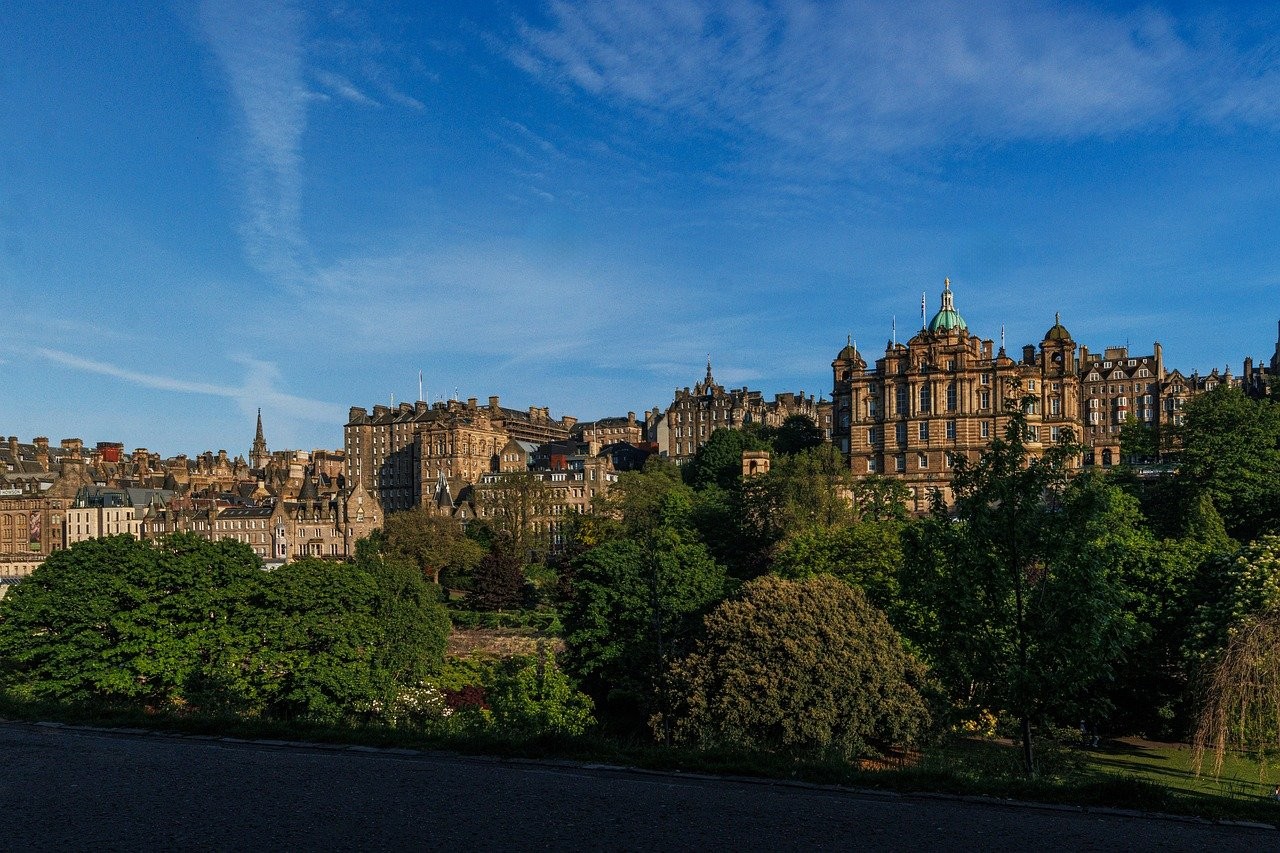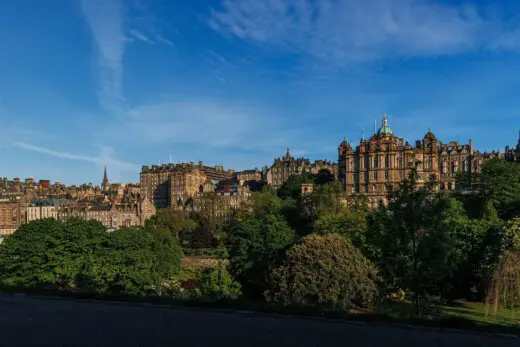Edinburgh Harry Potter Film Scenes, Scottish Pilgrimage Site for Fans, J.K. Rowling buildings Scotland
Edinburgh for Harry Potter Fans Guide
J.K. Rowling Books, Publicaton in Scotland – Scottish Writer Article
21 July 2019
Guide to Edinburgh for Harry Potter Fans
J.K. Rowling was a struggling single mother when she sat in Edinburgh’s cafes while writing the early Harry Potter books. Even after the Harry Potter series became a world phenomena, Rowling continued to write in Edinburgh. Rowling has said that she drew inspiration for the setting of Hogwarts and other locales described in her writings from Edinburgh and the surrounding area’s Gothic architecture and atmosphere.
Today, Edinburgh is a pilgrimage site for the series’ fans. Every month thousands of people from all over the world travel to Edinburgh from the online casino NZ and other locales to see some of the sites that Rowling has incorporated into her books.
Edinburgh attracts Harry Potter fans who come to the city to see the architecture and experience the atmosphere that inspired J.K. Rowling. Some of the locations include the settings for:
Edinburgh for Harry Potter Fans – J.K. Rowling Locations
Hogwarts
Hogwarts School of Witchcraft and Wizardry is indisputably the most important site in the Harry Potter series. It’s the setting for almost all of the action throughout the 7 books of the series, the place where Harry comes into his own as a member of the wizarding family. In the first book, as soon as Harry gets his acceptance letter to Hogwarts (by owl), Hogwarts becomes the setting for the majority of the series’ action.
Edinburgh is actually home to several schools that are located in castles. Among them are Stuart Melville College and Fettes college. The castle that served as Rowling’s inspiration for her books is George Heriot’s School, located in the city center.
George Heriot’s School was established in 1628 as a school for orphan boys – as he wrote, for “puire fatherless bairnes.” You can’t tour the castle because it still operates as a school but you can see the castle turrets from the road.
The school’s main building is notable for its renaissance architecture. It was built in the early 1600s and features masonry work carried out by may of the best-known stone masons of the era. The school was built as a quadrangle and features intricate decoration above each window. One of the school’s walls incorporates the 17th century city wall (Tetter Wall).
Another local building that inspired descriptions of Hogwarts is the University of Edinburgh’s Teviot Row House. Teviot Row House is the world’s oldest structure that was built, specifically, as a student union. Teviot was constructed using Hailes sandstone. It features pinnacled Holyrood and Falkland type gables with large windows along with late Gothic Traceried windows.
Greyfriars Kirkyard
Greyfriars Kirkyard is the graveyard that surrounds Greyfriar’s Kirk (church). It’s located near the cafesthat Rowling frequented when she was looking for cosy, heated locales in which to sit and write. Some of the gravestones in the cemetery almost certainly gave Rowling inspiration for characters’ names.
The Church is one of the oldest surviving buildings that still stands within the perimeter of Edinburgh’s Old Town. Construction on the Kirk began in 1602 and was once divided into “Old Greyfriars” and “New Greyfriars.”
The church was built inside the Flodden Wall, on the site of the Grey Friars’ (Franciscan) 13th century Monastery. The “New Greyfriars,” built to the west of the old church, was added in 1721. The structure is quite simple and resembles a Dutch barn. The graveyard that surrounds the Kirk brings the church its fame because several well-known Edinburgh residents are buried there.
Today, the graveyard is most known for featuring tombstones with names that Rowling used in her books. They include Thomas Riddle whose name may have been the inspiration for Tom Marvolo Riddle, the Harry Potter character who revealed that his real name was Lord Voldemort.
In addition, other Harry Potter names that were almost certainly inspired by Grey Friars’ cemetery tombstones include William McGonagall (Harry Potter Professor Minerva McGonagall) and Elizabeth Moodie (Alastor Moody.)
Diagon Alley
Dagon Alley is the center of wizarding London. It’s one of Rowling’s most creative settings and the locale frames many of Harry’s adventures in the series. The cobbled streets and unique shops are where Harry and his magical friends can purchase everything that they need for their wizarding studies and activities.
There are a number of streets in Edinburgh that served as inspirations for Diagon Alley. Victoria Street is likely one of them. Victoria Street has a number of painted shops and buildings, many with pointed roofs similar to those described along Diagon alley.
Other Edinburgh streets whose quaint exteriors mirror those described by Rowling in her depictions of Diagon Alley include the Grassmarket area, Candlemaker Row and West Bow.
Hogwarts Express
Harry’s journey into the world of Hogwarts starts on Hogwarts Express, a train that’s not visible to Muggle eyes. The train departs from Platform 9 ¾ every September 1st at 11:00a.m. (other journeys include post-holiday travel). Travelers get off their train at Hogsmeade Station and then continue on their journey to Hogwarts.
Descriptions of the Hogwarts Express, particularly those shown in the Harry Potter movies, match those of the Scottish Highlands where the exterior shots were shot for the films. Notably, in the movie adaptation of ”Harry Potter and the Chamber of Secrets”, when Ron and Harry try to catch up to the train by flying in Ron’s flying car, viewers see the train crossing the Glenfinnan Viaduct, a large, elevated bridge that was built in the late 19th century.
The Glenfinnan Viaduct is said to be the oldest mass concrete structure built in modern times. It was built on a curve and includes 21 arches. each 50 feet wide. There is no footpath so you need to observe the landscape from the train where you see views of the North and Loch Shiel as well as the hills to the North and the Glenfinnan monument (built to honor the memory of Prince Charles who tried to retake the British throne) to the South.
There are a number of Harry Potter tours in Edinburgh which will take you through these and other sites that served as some of J.K. Rowling’s inspirations for her magical books.
Scottish Architecture
Comments / photos for the Edinburgh for Harry Potter Fans page welcome
Website: Architecture





